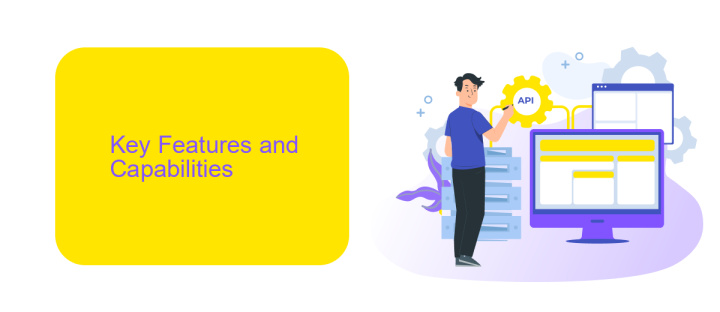Workflow Automation Provider
In today's fast-paced business environment, optimizing efficiency is crucial. Workflow automation providers play a pivotal role in streamlining operations, reducing manual tasks, and enhancing productivity. By integrating advanced technologies, these providers offer tailored solutions that adapt to the unique needs of each organization, ensuring seamless processes and improved outcomes. Discover how workflow automation can transform your business and drive success.
Market Overview
The workflow automation market has seen significant growth in recent years, driven by the increasing need for businesses to streamline operations and enhance productivity. Companies of all sizes are adopting automation tools to reduce manual tasks, minimize errors, and optimize workflow efficiency. This trend is particularly evident in sectors such as finance, healthcare, and manufacturing, where the demand for reliable and scalable automation solutions is paramount.
- Enhanced productivity through reduced manual intervention
- Minimized operational errors and inconsistencies
- Optimized resource allocation and management
- Scalable solutions catering to various industry needs
One notable player in this market is ApiX-Drive, a service that facilitates seamless integration between various applications and services. By enabling automated data transfer and synchronization, ApiX-Drive helps businesses eliminate repetitive tasks and focus on core activities. As the market continues to evolve, the adoption of such integration platforms is expected to rise, further driving the growth of the workflow automation sector.
Key Features and Capabilities

Workflow automation providers offer a range of powerful features designed to streamline business processes and enhance productivity. One of the key capabilities is the ability to create and manage complex workflows with ease. Users can automate repetitive tasks, set conditional triggers, and define multi-step processes, ensuring that every task is executed efficiently and accurately. Customizable templates and drag-and-drop interfaces further simplify the workflow creation process, making it accessible even for non-technical users.
Another critical feature is seamless integration with various third-party applications and services. For instance, ApiX-Drive enables users to connect and synchronize data across multiple platforms without any coding knowledge. This integration capability ensures that all business tools work in harmony, reducing manual data entry and minimizing errors. Additionally, real-time analytics and reporting features provide valuable insights into workflow performance, helping businesses identify bottlenecks and optimize processes for maximum efficiency.
Benefits and Use Cases

Workflow automation providers offer significant benefits by streamlining repetitive tasks and optimizing business processes. These platforms enhance productivity, reduce human error, and free up valuable time for employees to focus on more strategic activities.
Key benefits and use cases include:
- Increased Efficiency: Automating routine tasks reduces manual effort and speeds up operations.
- Error Reduction: Automated workflows minimize the risk of human error, ensuring higher accuracy and consistency.
- Cost Savings: By reducing the need for manual labor, businesses can save on operational costs.
- Improved Collaboration: Automation tools often include features that enhance team collaboration and communication.
- Seamless Integrations: Services like ApiX-Drive facilitate easy integration between various applications, enabling smooth data flow and process automation.
Incorporating workflow automation into your business strategy can lead to substantial improvements in efficiency and effectiveness. Platforms like ApiX-Drive make it easier to connect different systems, ensuring that your workflows are not only automated but also integrated seamlessly across various applications.
Selection Criteria and Best Practices

When selecting a workflow automation provider, it's crucial to consider several key factors to ensure the solution aligns with your business needs. Start by evaluating the provider's integration capabilities, as seamless integration with existing tools and systems is essential for a smooth workflow.
Another important criterion is the ease of use. A user-friendly interface can significantly reduce the learning curve, allowing your team to quickly adapt and maximize productivity. Additionally, consider the scalability of the solution to accommodate future growth and increased workflow complexity.
- Integration capabilities
- Ease of use
- Scalability
- Customer support
- Security and compliance
Best practices for implementing workflow automation include starting with a clear understanding of your processes and identifying areas that will benefit most from automation. Utilize services like ApiX-Drive to facilitate integrations and streamline workflows. Regularly monitor and optimize your automated processes to ensure they continue to meet your evolving business needs.


Leading Providers and Market Share
In the rapidly evolving field of workflow automation, several leading providers have emerged as key players, each commanding significant market share. Among them, UiPath, Automation Anywhere, and Blue Prism are often cited as the most influential, offering robust platforms that cater to a wide array of business needs. These companies have distinguished themselves through their comprehensive solutions that streamline processes, enhance productivity, and reduce operational costs, making them indispensable to businesses aiming for digital transformation.
Another noteworthy provider is ApiX-Drive, which specializes in seamless integration and automation of various services and applications. ApiX-Drive has gained traction by enabling businesses to effortlessly connect different software platforms, thereby optimizing workflow efficiency. This service is particularly valuable for companies looking to automate repetitive tasks without the need for extensive coding knowledge. As the demand for workflow automation continues to grow, these leading providers are well-positioned to maintain their substantial market shares while driving innovation in the industry.
FAQ
What is workflow automation and why is it important?
How can I determine which processes are suitable for automation?
What are some common challenges when implementing workflow automation?
Can I integrate multiple applications and systems with workflow automation tools?
How do I measure the success of a workflow automation implementation?
Do you want to achieve your goals in business, career and life faster and better? Do it with ApiX-Drive – a tool that will remove a significant part of the routine from workflows and free up additional time to achieve your goals. Test the capabilities of Apix-Drive for free – see for yourself the effectiveness of the tool.

